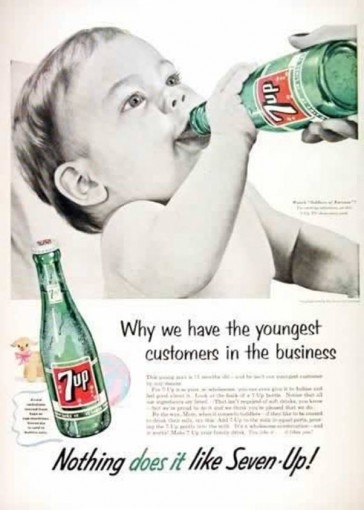When Not to Translate Content into Other Languages
Creating excellent marketing content could take months for a solid and intriguing campaign.
It involves your marketing, sales, operations and executive teams.
Now that you have your content ready in English, you are thinking of translating it into other languages.
You then decide to reach out to a language service company to discuss your project and get a quote.
But what if that’s not necessarily the best approach?
Let’s discuss why.
Timing and planning are critical when it comes to content translation, just like with any other component of a well-executed marketing campaign.
If you haven’t planned for your content to be translated and thought of it as a post-marketing campaign activity, you might be in for a surprise.
Since timing is essential in marketing, I am going to focus on the when instead of the why.
Here is when not to translate content into other languages, as it may hurt your overall marketing efforts.
1. When you are not sure about the difference between translation & interpretation.
Yes. There’s a significant difference between the two.
The overall concept is the same, as it involves converting one language to another. However, when we in the industry talk about translation we generally refer to translating the written word.
You wouldn’t have your content interpreted, but rather translated. Now on the other hand if you really need your content “interpreted”, then I recommend having a professional interpreter assist you with the task. Interpretation refers to communicating orally or using sign language.
Now you know the difference between translation & interpretation and can figure out how to integrate either or both into your marketing campaign.
My recommendation: Study up on the basic language service industry terminology so you know exactly what to ask for when procuring language services.
A good language service company will guide you along. A not so good one may take your request literally and deliver unexpected results.
When to do it: Before you contact a language service company to engage them to work on your project.
2. When you’ve not thought about translating your content at all.
I’ve seen thousands of content translation projects in the past 10 years. More than half of those projects fall into this category.
The content was originally created in English and it was later needed to be translated into other languages.
There are a few issues when approaching a translation project in this matter. Perhaps the biggest one is that the content was written in a way that can only be understood by an American target audience.
The language and concepts used in the English copy did not translate well into other languages. This is because those concepts don’t exist in those cultures.
Another issue is being overly verbose. I’m talking about cramming as many as 1,000 words on a single page without any graphical elements.
While the document looks fine in English, it may not look as good in Spanish. The reason – Spanish expands by 20% to 25% in volume of words compared to the English source.
All of the sudden you have 1,250 words you have to fit nicely on one page. This makes it really difficult to read without a magnifying glass.
Remember: White Space is Your Friend
There are many other issues that are worth mentioning, but they would require their own blog article. So, I will just focus on these two for now.
My recommendation: If you can do two things when you are creating the English source, do these. First, make sure your text is easily translatable. Use clear and objective writing style without any jargon or slang.
Finally, remember that large fonts and white space are your friends. Stick to 300 to 500 words per page and use plenty of white space. For more information, check out the best practices for easy reading.
When to do it: While creating your source documents.
3. When you don’t know your target audience.
English into Spanish is by far the most common language combination for language service companies in the United States.
With so much supply and demand, it must surely be easy to integrate in your content, right?
This is true as long as you know your target audience. Whether it’s Spanish or any other language, the same concept applies.
For example, your Spanish-speaking target audience could be from Mexico or Puerto Rico. Some live in the Pacific Northwest, others in New England.
Or you might be planning an expansion into Europe and require Castilian Spanish.
The reading level is also good to consider. How literate is your target audience?
It’s important to establish and clarify the reading level while scoping your project out. Are you targeting scientists or high school students with your efforts?
Your English copy may work well for English-speaking audience, but if the translated copy inadvertently changes the reading level, you may not get the results you expected. Or worse, you may completely alienate your target audience.
My recommendation: Understand who you are targeting and make sure your language service company does to. Consider the variations in languages, including common ones such as Spanish and French. Make sure your intended reading level is conveyed in the translated text.
When to do it: During the project scoping phase.
4. When you’re not prepared for the costs associated with translation.
If you are serious about producing quality content in other languages, you should start thinking about how it will impact your budget. Quality translation and related language services will come at a price.
The question is, are you ready to pay that price?
Here’s a suggestion to help you prepare for costs associated with language translation services.
The way most language service companies charge for their services is per word. The more words your English copy contains, the higher the translation cost will be.
One way to reduce the costs is to prepare your content in a TM-friendly format.
TM stands for Translation Memory. It’s a tool that human translators use to help improve productivity, consistency and quality, while leveraging the text that’s already been translated.
The more text a translator is able to leverage, the more cost savings you can take advantage of. MemoQ is a great TM tool if you are looking to deploy one in your organization.
My recommendation: Budget for translation services in advance. Be prepared to describe what you need done, so a language service company can provide you with an appropriate quote.
When shopping for translation services, keep in mind that there will always be a company out there that can do it for less. Going with the cheapest alternative now may cost you more in the long run.
When to do it: At the time you are planning your overall budget.
5. When you don’t have a post-translation strategy.
You had all of your content translated and published.
What’s your plan now?
This is where the post-translation strategy comes in play. You’ve got to be ready for all the incoming business that you’re projected to get from non-English speaking customers.
The problem is that those customers don’t speak English and will be contacting you in their language.
If you had your materials translated into Spanish, make sure you at least have bilingual staff on your team to handle inbound Spanish requests. If you don’t, it will certainly cause a frustrating customer experience.
Same applies to inquiries that come in electronically or in writing. Do you have a plan to have those back-translated into English?
Be ready for inquiries in other languages because they will come.
My recommendation: Plan on handling inbound business in foreign languages. Include a communication plan in your post-translation strategy.
Think beyond the translation phase and how you will handle all the inbound business. This could be as simple as hiring bilingual employees to interact with your customers.
Alternatively, you can partner with a language service company to assist.
When to do it: Before you publish your translated content to the public.
Conclusion
Whether it’s a marketing campaign or a simple brochure that you need translated, consider these concepts when approaching your next project. They will help you get the results you want.
You now know when not to translate content. Plan things out first and do it the right way!
Share your stories about content translation strategies gone wrong (or right) in the comments.



